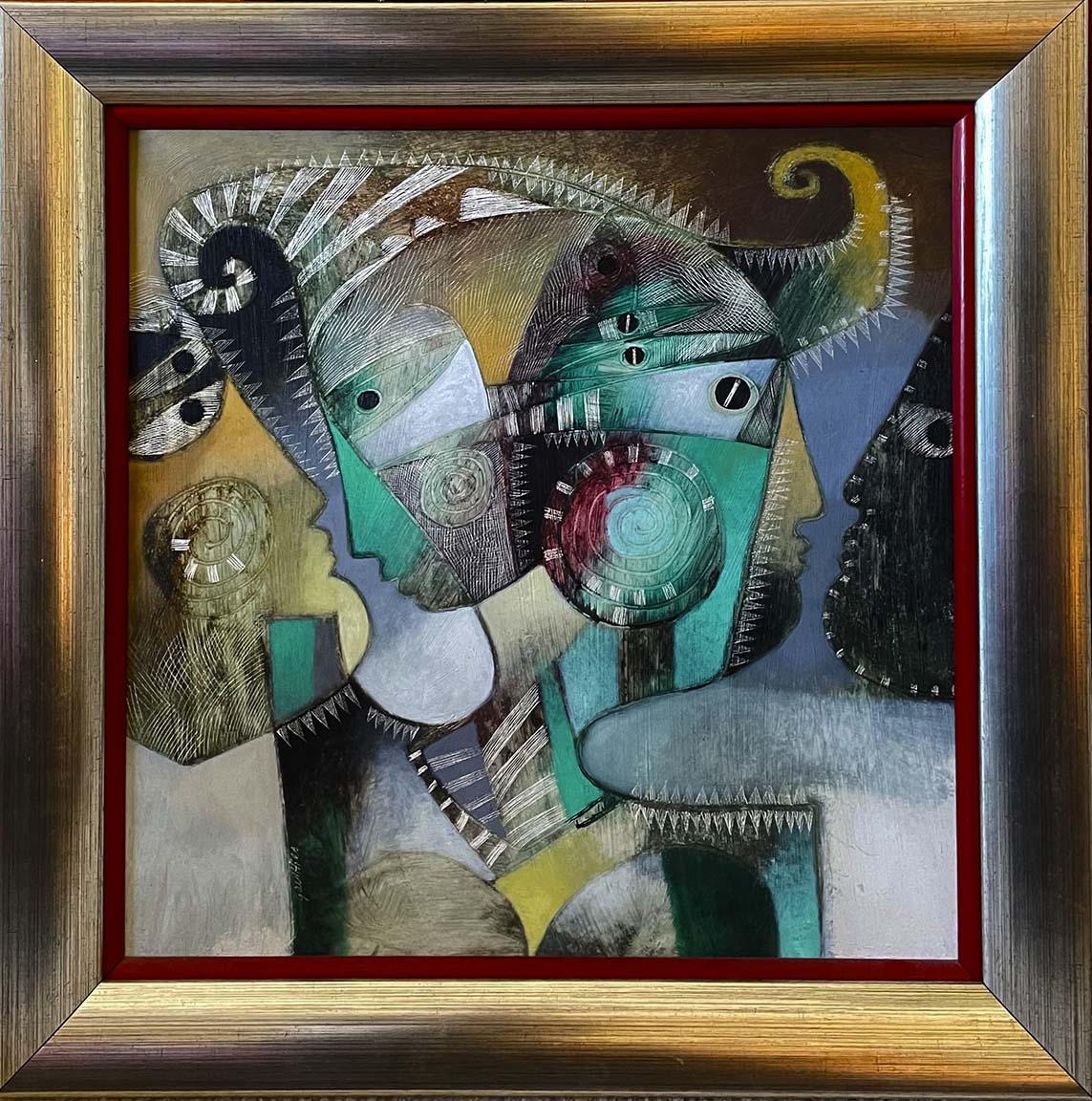

ORESTES GAULHIAC
"LA CONVERSACION"
OIL ON CANVAS, SIGNED
CUBA, C. 2008
19 X 19 INCHES
24 X 24 INCHES WITH FRAME
Orestes Gaulhiac was born in 1960 in Santiago de Cuba. In 1976, he obtained the title as Professor of Plastic Arts in the Provincial School of Plastic Arts in Santiago de Cuba. In 1978, he participated in a group exhibition, “Saludo al 26 de Julio” in Havana. In 1980, Gaulhiac graduated from the National School de Diseno de Ciudad de la Habana. After graduating, Gaulhiac started to work as a Theatrical designer, working for Theatre and the Cuban and Foreign Television and Cinema industry. He then pursued numerous solo and group exhibitions up until the present. He has last exhibited in Los Angels in 2000 in the group show “Galeria Robert Saavedra.” His work is in many private collections in the USA and Europe. As an internationally acclaimed painter and ceramist, Orestes Gaulhiac is recognized for his diversity in style and technique. Influenced by his modest roots growing up in the surrounding countryside of Santiago de Cuba, Gaulhiac's works reflect an appreciation for the simple, natural elements of life as well as various "states of spirit" he believes we all experience. Gaulhiac delves into the complexities of modern-day life by bestowing human qualities on fish, birds and animals. Folklore comes alive in recognizable, yet redefined renderings of rural scenes populated with animals, plants, fruit, dolls and circus acts. His playful universe celebrates the grandeur of animals and nature altogether. In addition, Gaulhiac's borderless universe incorporates kings, queens, deities, virgins, mythological heroes, and clowns. His presentation of intertwined and overlapping figures takes his characters outside of class. Gaulhiac explores slanted, improbable relationships between rulers (the wealthy and powerful) on one hand and their subjects (the less affluent or fortunate) on the other. The artist describes his use of iconic roles such as royals and servants to reflect emotional experiences internal to all people. He calls these "moments of the soul." The artist expands on this idea, "At times we feel like kings, at others times, fools, and from time to time, clowns."
|